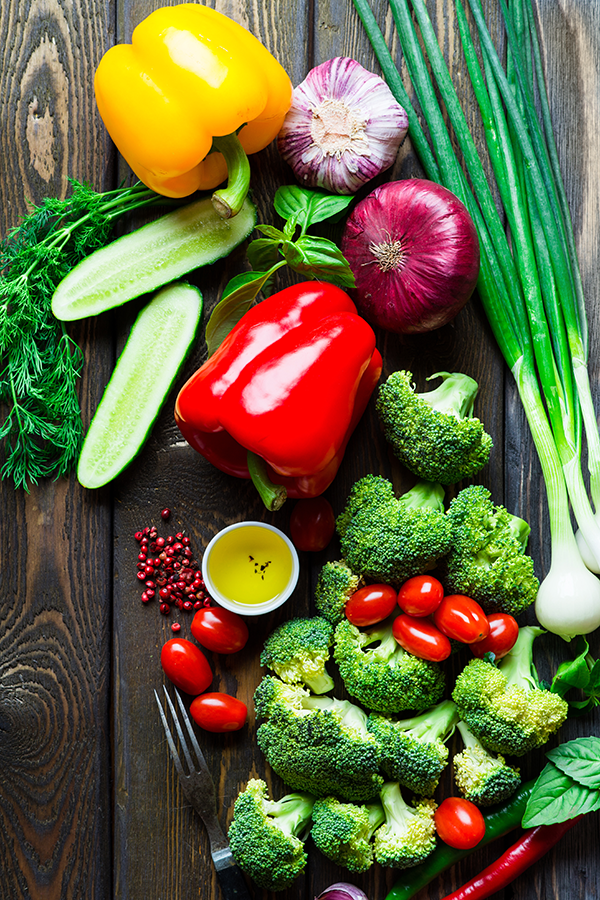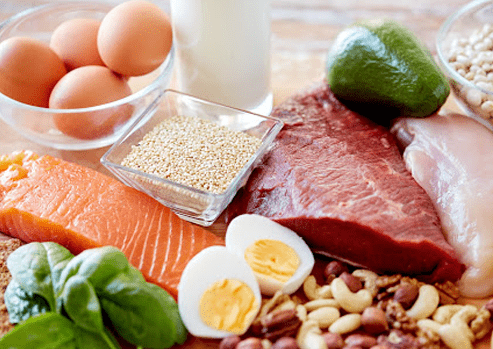Research done by Dr Dominic D’Agostino, Dr Thomas Seyfried and Dr Gary Fettke has revealed that cancer is predominantly a metabolic disease and not a genetic one as previously thought.
“Most cancer scientists have historically thought that cancer was a genetic disease, but only 5-10% of cancer is hereditary,” says Dr D’Agostino.
A metabolic disease is one that disrupts normal metabolism, the process of converting food to energy on a cellular level.
The mitochondria generate the energy that our cells need to do their job – and are often referred to as the powerhouses of the cells.
When carbs (made up of glucose) are ingested, they cause the blood glucose levels to rise. The hormone insulin, responsible for regulating energy usage – in particular our relationship to carbs – is secreted by the pancreas because a high blood glucose concentration is toxic for human tissues as it damages the structure of all proteins.
According to Dr Fettke, we can only metabolise about one teaspoon (4 grams) of glucose at once and the rest is stored in the liver and muscles as glycogen, or if this cannot happen, it is stored as fat.
The more carbs ingested, the more insulin is produced, the more our body becomes resistant.
Insulin resistance occurs when the body does not respond to insulin correctly. This results in increased blood glucose levels, which can’t be stored in the liver or muscles, so must be stored as fat. This is discussed in great detail, by Prof Noakes, in the Beginner Banting Online Program.
Insulin is therefore the fat storing hormone, which leads to an expanding waistline. If a high carb diet is followed, and if unchecked, it can lead to obesity, metabolic syndrome (a combination of obesity, hypertension and gout) and to type 2 Diabetes.
The long-term damage that occurs in Diabetes is due to the effect of continually high blood glucose concentrations on many different organs. If blood glucose levels are high, so too will insulin levels be, and will therefore add to the glucose-induced damage.
“The more I read the more I am convinced of the link between diet and cancer. A lot hinges around the role of insulin on stimulating factors involved in cellular division and metabolism,” says Dr Gary Fettke.
In his study, Dr Elio Riboli notes the increased riskof late onset breast cancer, colon, rectum, endometrial, oesophageal and kidney cancers with obesity. Here he explains the link between endometrial cancer and obesity: “Essentially, endometrial cancer is very strongly associated with oestrogen levels. So the more adipose tissue there is, the more oestrogens. So there are two effects. One is that in the obese, the adipose tissue produces oestrogens, converts androgens to oestrogens. The second one is that insulin, down-regulating sex hormone binding globulin, makes oestrogen more bioavailable.”
According to Dr Gary Fettke, in his lecture at the LCHF Convention earlier this year, cancer can be tied up with glucose metabolism. Apparently, cancer cells cannot use any other fuel for growth, except for glucose. Without glucose they starve to death. This theory is based on the Warburg effect, by Dr Otto Warburg, who won the 1931 Nobel Prize for discovering aerobic glycolysis – a defect in mitochondrial glucose metabolism that causes fermentation of glucose and diverts glucose away from energy production to cell growth. In other words, he discovered that cancer cells have defective mitochondria and thrive on sugar.
Dr Gary Fettke also believes that the problem with modern cancer treatment is that it ignores the glucose metabolism.
“We also have not fully recognised the association of diet in the causation of cancer. The problem is sugar, particularly fructose, refined carbohydrates and polyunsaturated seed oils. The modern diet is inflammatory and it produces masses of oxygen free radicals.”
A low-carb, high-fat Ketogenic diet (which is in essence the Banting diet, but with carb consumption below 25g a day) has successfully treated a variety of diseases including obesity, epilepsy, Diabetes, Alzheimer’s and heart disease. Dr Seyfried calls it a single metabolic approach to a multitude of different diseases.
By keeping carbs below 25g a day, the body moves from a carb burning state to a fat burning state. Ketones are formed when fatty acids are broken down by the liver for energy. Ketosis is reached when ketones are formed in the body through withdrawal of carbs. These molecules are generated during fat metabolism – and are a sign that your body is now using fat for energy. This process forces the body to burn fat. Prof Noakes explains this in more detail in the Beginner Banting Online Program, where you can also find the necessary tools to follow a Ketogenic lifestyle.
“Nearly all the healthy cells in our body have the metabolic flexibility to use fat, glucoseand ketones to survive, but cancer cells lack this metabolic flexibility and require large amounts of glucose and cannot survive on ketones. So by limiting carbohydrates, we can reduce glucose and insulin, and thus restrict the primary fuel for cancer cell growth.” Says Dr Seyfried
Dr Gary Fettke has a vested interest in this research as he had brain cancer 15 years ago. He switched to a ketogenic diet and essentially starved the cancer.
Prof Noakes says, “When fighting cancer, only the best will do. Grass-fed beef, pasture-reared chickens, organic vegetables, etc. Because hormones and tainted foods are fed to animals, pesticides sprayed on veg and genetically modified soya and corn is routinely fed to chickens and livestock, one has to be committed to quality in order to avoid the hazards of these substances, highly carcinogenic in themselves.”
What to eat and drink on a Ketogenic diet
Animal protein
Saturated fat
Olive oil
Avocado
Above the ground vegetables
Water
What to avoid on a Ketogenic diet
Processed food
Fizzy drinks
Toxic oils
Processed meat
Fast food
Cancer Fighting Foods

Tomatoes: cooking enhances cancer-fighting and anti-oxidant properties. Lycopene, which gives tomatoes their red colour is a cancer-fighting anti-oxidant. Lycopene was found to stop endometrial cancer cell growth in a study in Nutrition and Cancer.
Chilli: capsaicin that gives chillies their strong, spicy character is anti-bacterial, anti-carcinogenic and anti-diabetic.
Cruciferous vegetables: such as cabbage, cauliflower, broccoli, spinach, Brussels sprouts and kale have powerful anti-carcinogens. Cabbage in particular contain anti-oxidants known to help protect against breast, colon and prostate cancers. Broccoli is the only one with a sizable amount of sulforaphane, a particularly potent compound that boosts the body’s protective enzymes and flushes out cancer-causing chemicals
Mushrooms: contain the amino acid ergothioneine, which is an anti-oxidant and an anti-inflammatory, it protects against free radicals and boosts the immune system.
Aubergine: the skin is rich in anti-oxidants called anthocyanins, which are thought to fight cancer, inflammation, aging and neurological diseases.
Turmeric: contains curcumin which is a powerful anti-oxidant and anti-inflammatory. According to Cancer Research UK, it seems to be able to kill cancer cells and prevent more from growing. It has the best effects on breast cancer, bowel cancer, stomach cancer and skin cancer cells.
Berries: the idea of berries as anticarcinogens began in the late 1980s, when it was discovered that berries, and in particular black raspberries, contained ellagic acid, which is thought to inhibited the genesis of tumours.
Garlic: belongs to the Allium class of bulb-shaped plants, which also includes onions, chives, leeks, and scallions. It is an excellent and very powerful neutraliser of free radicals. It contains quite good levels of selenium and, in several studies, selenium has been shown to reduce cancers by 20%.
Phytochemicals in garlic have been found to halt the formation of nitrosamines, carcinogens formed in the stomach.
In conclusion, from the evidence that we have gathered from all the various sources, it is clear to see that the link between diet and health is a serious one and that what we eat really has an effect in the long term. Dr D’Agostino goes as far as to say, “let food be thy medicine.”


